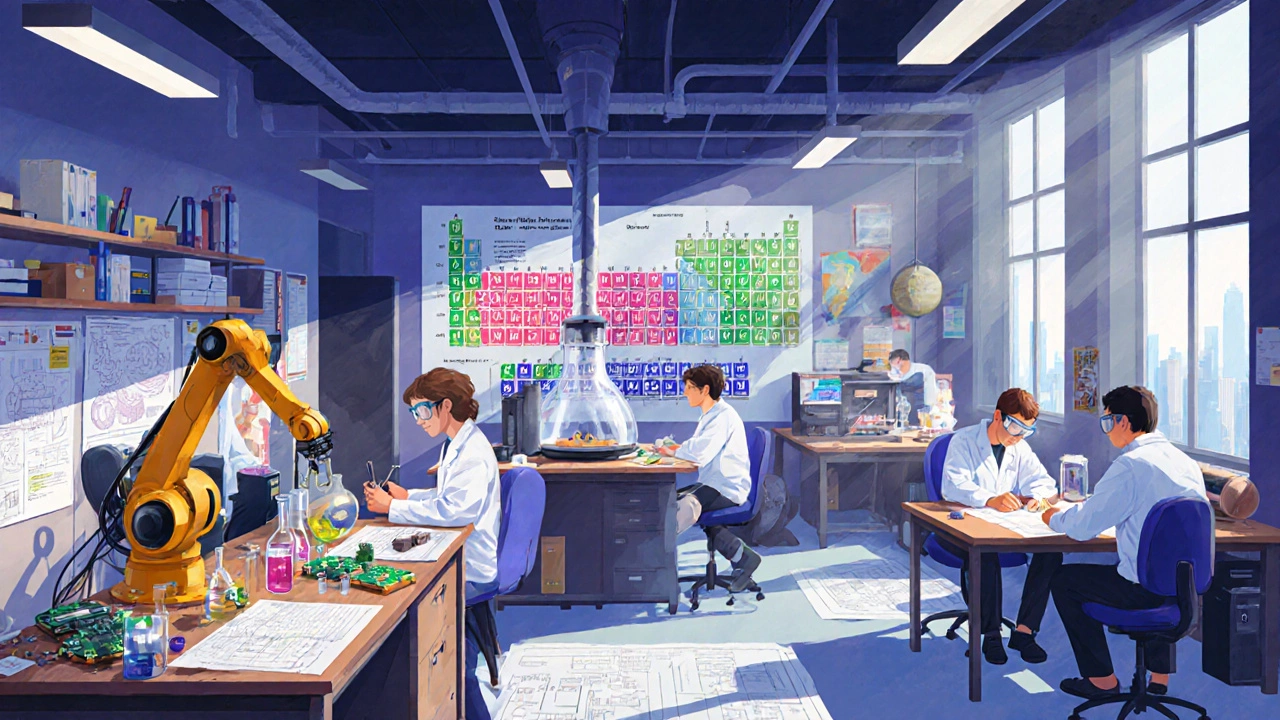Which College Major Is the Hardest? A Complete Guide

College Major Difficulty Calculator
Select a Major to Analyze:
Major Details
Select a major above to view its difficulty analysis.
Comparison Table
| Major | Credit Hours | Average GPA | Core Difficulty Factors | Difficulty Level |
|---|
When you hear the phrase hardest major, you probably picture endless labs, late‑night problem sets, and a GPA that hovers just above the pass line. But “hardest” isn’t the same for everyone - it depends on the skills you bring, the way a program is structured, and how you measure difficulty. This guide breaks down the majors that consistently rank at the top of difficulty charts, explains why they’re tough, and gives you practical ways to cope if you choose one.
Quick Takeaways
- Engineering, Physics, Chemistry, Mathematics, Architecture, Medicine, Computer Science, and Philosophy are the eight majors most often labeled hardest.
- Difficulty comes from a mix of credit load, abstract thinking, lab work, and strict grading.
- Average GPAs for these majors range from 2.6 to 3.2, well below the university overall average.
- Success hinges on strong time‑management, active study groups, and using campus resources early.
- Switching majors later is common - about 30% of students in these programs change direction before graduation.
How We Judge Difficulty
To keep the list fair, we looked at three objective factors that most research papers and student surveys agree on:
- Credit Hours Required - More credits usually mean more coursework and labs.
- Average GPA - Lower GPAs indicate tougher grading curves.
- Core Difficulty Factors - This covers abstract reasoning, lab intensity, project scope, and prerequisite depth.
We also considered student‑reported stress levels from the 2023 National College Survey, which asked 12,000 undergrads to rank their programs on a 1‑10 stress scale. The eight majors below averaged 8 or higher.

Top 8 Hardest Majors
Below is a snapshot of each major, its defining traits, and why students often find it demanding.
Engineering is a broad field that blends math, physics, and design to create real‑world solutions. Its defining attribute is a heavy lab component - most engineering programs require 10‑12 lab credits in addition to 30‑40 lecture credits. Typical graduate GPA hovers around 2.9, reflecting tight grading on complex projects.
Physics focuses on the fundamental laws governing matter and energy. Core difficulty factors include advanced calculus, quantum mechanics, and extensive problem‑solving sets. Students average 3.0 GPA, but the drop‑rate for first‑year physics courses sits at 22%.
Chemistry merges lab work with theoretical concepts like organic synthesis and thermodynamics. A typical chemistry major logs 14 lab hours per week during sophomore year, making time‑management crucial. Average GPA is 2.8, and lab safety protocols add an extra layer of stress.
Mathematics is pure abstraction: proofs, higher‑level calculus, and topology dominate the curriculum. The major’s difficulty stems from the need for rigorous logical reasoning, a skill many students develop only after years of practice. Average GPA sits at 3.1, but the pass‑rate for senior proof courses is just 68%.
Architecture blends artistic design with structural engineering. Students juggle studio hours that can stretch to 60hours per week, alongside technical courses in building codes and material science. GPA averages around 2.7, and many students report burnout by the third year.
Medicine (Pre‑Medical) is the gateway to becoming a doctor. Though technically a graduate program, the undergraduate pre‑med track already demands high science credit loads, MCAT preparation, and intense competition for medical school acceptance. Average GPA is 3.2, but the attrition rate before applying to med school is over 35%.
Computer Science offers both theoretical depth and practical coding. Difficulty spikes in algorithms, data structures, and systems programming, where a single logic error can break an entire project. Average GPA is 3.0, and the average time to graduate extends to 4.5years due to co‑op placements.
Philosophy may look “easy” on the surface, but its core difficulty lies in dense texts, abstract argumentation, and rigorous essay grading. Students often spend 20‑30 hours a week reading primary sources like Kant or Wittgenstein. Average GPA is 3.2, yet the major has one of the highest dropout rates because of perceived irrelevance.
What Makes These Majors Tough?
Across the eight majors, three recurring themes drive the difficulty rating:
- Heavy Lab/Studio Work - Engineering, Chemistry, Architecture, and Medicine require weekly lab sessions that count toward credit hours. Missing a lab often means a failed component.
- Abstract Reasoning - Physics, Mathematics, Computer Science, and Philosophy demand a level of theoretical thinking that can feel disconnected from everyday experience.
- High Stakes Grading - Most of these programs use curve grading, meaning a single low score can pull your semester GPA down dramatically.
Understanding these factors helps you anticipate where you’ll need extra support.

Tips to Survive a Hard Major
- Plan Your Schedule Rigorously - Use a semester planner to block out lab times, study blocks, and recovery periods. Treat each lab as a non‑negotiable class.
- Form Study Groups Early - Collaborative problem solving boosts understanding, especially for abstract subjects like physics or philosophy.
- Leverage Campus Resources - Most universities offer tutoring centers, writing labs, and mental‑health counseling specifically for high‑stress programs.
- Practice Active Recall - Instead of rereading notes, test yourself with flashcards or past exam questions. This method improves retention for math‑heavy courses.
- Schedule Regular Breaks - The 50‑10 rule (50 minutes of work, 10 minutes break) keeps burnout at bay, especially during long studio sessions.
- Consider a Minor or Elective - Balancing a tough major with a lighter minor can provide a mental breather and diversify your skill set.
Remember, difficulty is not a verdict on your ability. It’s a signal to adapt your study habits.
Comparison Table of the Hardest Majors
| Major | Typical Credit Hours | Average GPA | Core Difficulty Factors |
|---|---|---|---|
| Engineering | 130‑140 | 2.9 | Lab intensity, project design, math demand |
| Physics | 125‑135 | 3.0 | Advanced calculus, conceptual depth |
| Chemistry | 130‑140 | 2.8 | Lab safety, reaction mechanisms |
| Mathematics | 120‑130 | 3.1 | Proof writing, abstract theory |
| Architecture | 140‑150 | 2.7 | Studio hours, design critiques |
| Medicine (Pre‑Medical) | 135‑145 | 3.2 | High science load, MCAT prep |
| Computer Science | 120‑130 | 3.0 | Algorithms, systems programming |
| Philosophy | 110‑120 | 3.2 | Dense texts, argumentative essays |
Frequently Asked Questions
Which major has the highest average credit load?
Architecture typically requires the most credit hours, often exceeding 140 credits due to extensive studio courses.
Are there any majors that are universally considered easier?
Ease is subjective, but majors like Communications, Business Administration, and Education generally have higher average GPAs and lower lab requirements.
Can I switch out of a hard major without losing credits?
Most universities allow elective credits to transfer, but core courses often don’t count toward a different major. Consulting an academic advisor early can minimize lost credits.
Do hard majors affect job prospects after graduation?
Employers often view graduates from rigorous programs as problem‑solvers. Engineering, Computer Science, and Medicine consistently rank high in starting‑salary surveys.
How can I improve my GPA in a demanding major?
Focus on consistent weekly review, use office‑hour time wisely, and form study groups that meet at least twice a week. Turn in assignments early to get feedback before final grading.